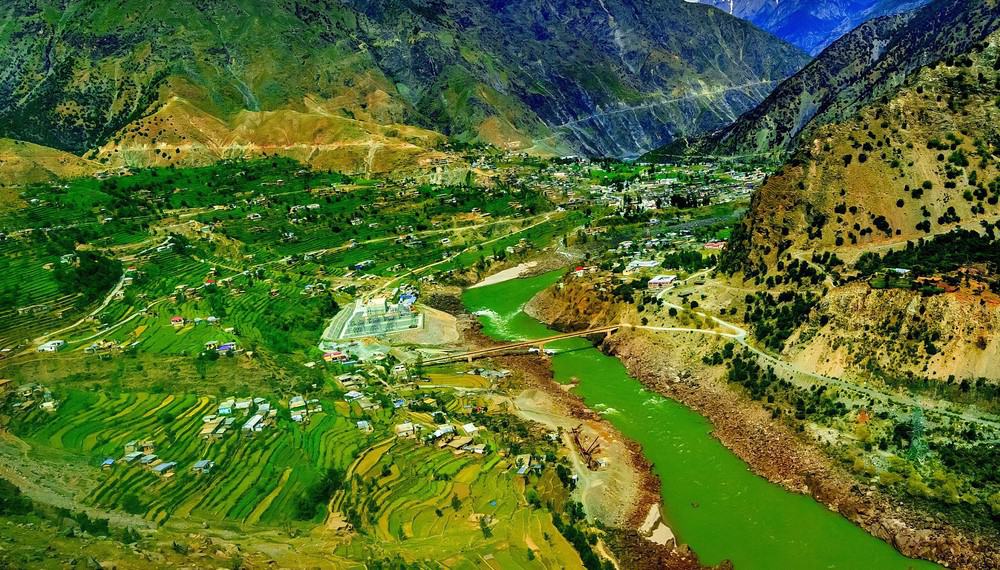By Alan Nicol, Strategic Program Leader at the International Water Management Institute (IWMI)
I was at the local corner store in Uganda last week and noticed the profusion of rice being sold, the origin of which was from either India or Pakistan. It is highly likely that this rice being consumed in Eastern Africa, was produced in the Indus Basin, using Indus waters, and was then processed and shipped to Africa. That is not exceptional in its own right and is, arguably, a sign of a healthy global trading system.
Nevertheless, the rice in question is likely from a system under increasing stress, one that is often simply viewed as a hydrological (i.e., basin) unit. What my trip to the corner store shows is that perhaps more than ever before a system such as the Indus is no longer confined–it extends well beyond its physical (hydrological) borders.
Not only does this rice represent embedded ‘virtual’ water (the water used to grow and refine the produce), but it also represents policy decisions, embedded labor value, and the gamut of economic agreements between distribution companies and import entities, as well as the political relationship between East Africa and South Asia. On top of that are the global prices for commodities and international market forces.
In that sense, the Indus River Basin is the epitome of a complex system in which simple, linear causality may not be a useful way for decision makers to determine what to do and how to invest in managing the system into the future. Integral to this biophysical system, are social, economic, and political systems in which elements of climate, population growth and movement, and political uncertainty make decisions hard to get right.
Like other systems, it is constantly changing and endlessly complex, representing a great deal of interconnectivity. This poses questions about stability, sustainability, and hard choices and trade-offs that need to be made, not least in terms of the social and economic cost-benefit of huge rice production and export.

An aerial view of the Indus River valley in the Karakorum mountain range of the Basin. © khlongwangchao | Shutterstock
So how do we go about planning in a system that is in such constant flux?
Coping with system complexity in the Indus is the overarching theme of the third Indus Basin Knowledge Forum (IBKF) being co-hosted this week by the International Centre for Integrated Mountain Development (ICIMOD), the International Institute for Applied Systems Analysis (IIASA), the International Water Management Institute (IWMI), and the World Bank. Titled Managing Systems Under Stress: Science for Solutions in the Indus Basin, the Forum brings together researchers and other knowledge producers to interface with knowledge users like policymakers to work together to develop the future direction for the basin, while improving the science-decision-making relationship. Participants from four riparian countries–Afghanistan, China, India, and Pakistan–as well as from international organizations that conduct interdisciplinary research on factors that impact the basin, will work through a ‘marketplace’ for ideas, funding sources, and potential applications. The aim is to narrow down a set of practical and useful activities with defined outcomes that can be tracked and traced in coming years under the auspices of future fora.
The meeting builds on the work already done and, crucially, on relations already established in this complex geopolitical space, including under the Indus Forum and the Upper Indus Basin Network. By sharing knowledge, asking tough questions, and identifying opportunities for working together, the IBKF hopes to pin down concrete commitments from both funders and policymakers, but also from researchers, to ensure high quality outputs that are of real, practical relevance to this system under stress–from within and externally.
Scenario planning
Feeding into the IBKF3, and directly preceding the forum, the Integrated Solutions for Water, Energy, and Land Project (ISWEL) will bring together policymakers and other stakeholders from the basin to explore a policy tool that looks at how best to model basin futures. This approach will help the group conceive possible futures and model the pathways leading to the best possible outcomes for the most people. This ‘policy exercise approach’ will involve six steps to identify and evaluate possible future pathways:
- Specifying a ‘business as usual’ pathway
- Setting desirable goals (for sustainability pathways)
- Identifying challenges and trade-offs
- Understanding power relations, underlying interests, and their role in nexus policy development
- Developing and selecting nexus solutions
- Identifying synergies, and
- Building pathways with key milestones for future investments and implementation of solutions.
The summary of this scenario development workshop and a vision for the Indus Basin will be shared as part of the IBKF3 at the end of the event, and will help the participants collectively consider what actions can be taken to ensure a prosperous, sustainable, and equitable future for those living in the basin.
The rice that helps feed parts of East Africa plays a key global role–the challenge will be ensuring that this important trading relationship is not jeopardized by a system that moves from pressure points to eventual collapse. Open science-policy and decision-making collaboration are key to making sure that this does not happen.
This blog was originally published on https://wle.cgiar.org/thrive/2018/05/29/rice-and-reason-planning-system-complexity-indus-basin.
Note: This article gives the views of the author, and not the position of the Nexus blog, nor of the International Institute for Applied Systems Analysis.

You must be logged in to post a comment.